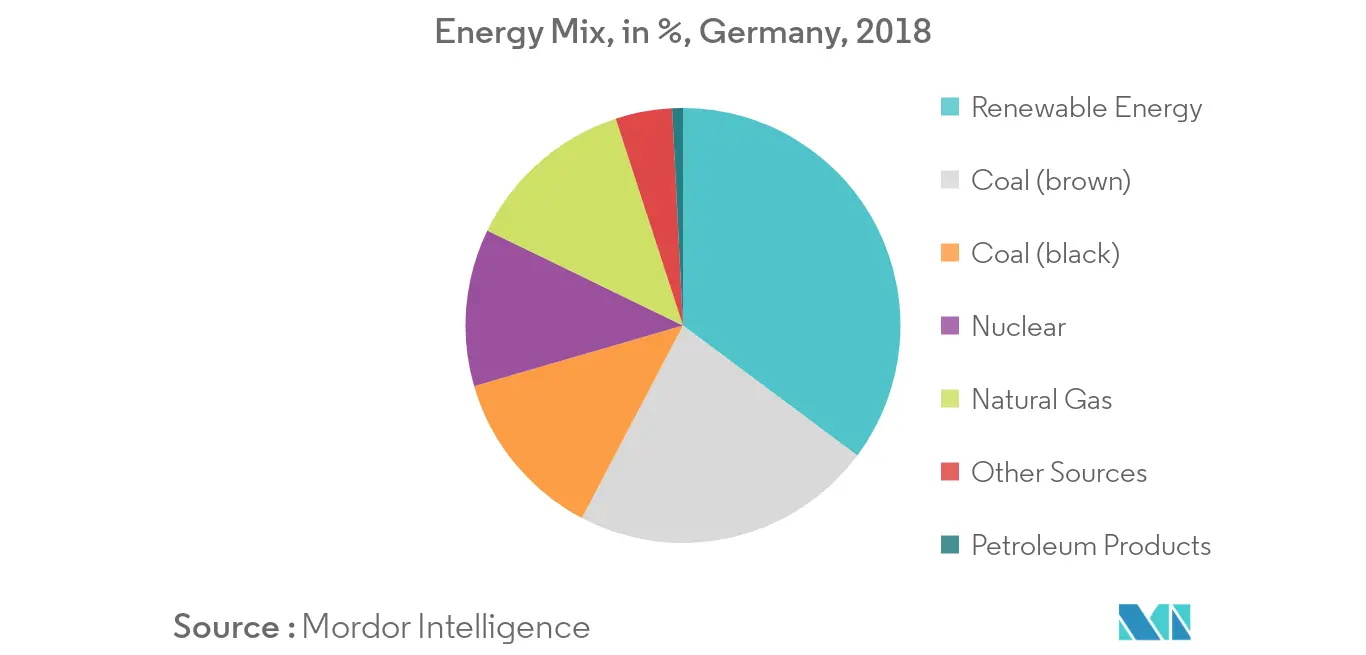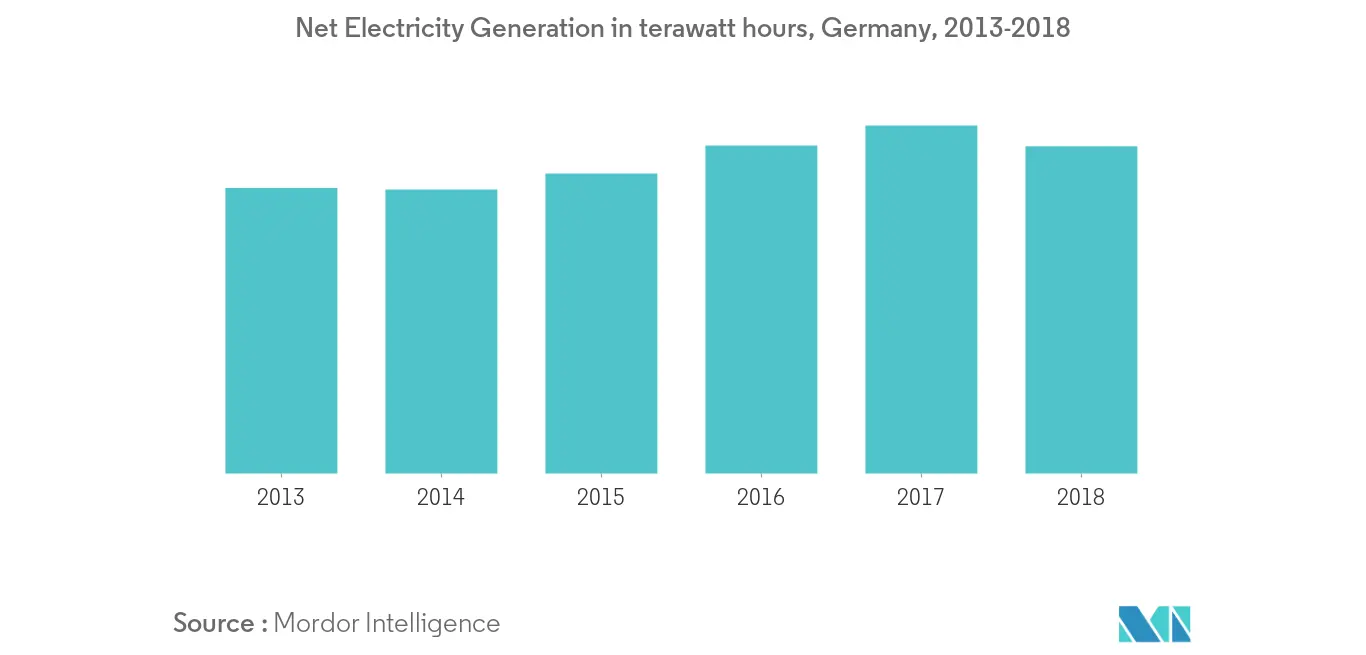Market Trends of Germany Combined Heat and Power Industry
This section covers the major market trends shaping the Germany Combined Heat & Power Market according to our research experts:
Natural Gas Based Combined Heat and Power to Dominate the Market
- As of 2018, the electricity generation from natural gas accounted for nearly 83.4 billion KWh in Germany. Natural gas consumption in Germany decreased in 2018 by 1.6% to 945 bn KWh, owing to the sustained period of mild weather and a slight economic downturn. Also, natural gas accounted for 23.7% of the domestic energy mix.
- Naturally occurring gas has been the long runner in the CHP sector for years and has made a name for itself in terms of efficiency, environmental compatibility, and safety. Most CHP plants in Germany are operated with natural gas as fuel.
- Natural gas, with methane as the main fuel, burns cleanly and safely, reducing maintenance and extending the life of the CHP unit. The Pro2 natural gas CHP generates heat and electricity at the same time and offers an extremely high degree of efficiency.
- Power plants like HKW West M5 in Frankfurt and HKW 3 Stuttgart-Gaisburg in Stuttgart commissioned on Jan 2018 and Aug 2018. Natural gas is the fuel and technology like steam turbines are used. The status of these plants is in operating condition.
- Germany launches one of European's most modern gas-fired power plants replacing coal-fired power station on Jan 2020 i.e. INNIO technology provides coastal power plant with gas engines that replace decommissioned coal-fired power plant, resulting in over 70% carbon dioxide reduction.
- Under the CHP 2016 act, the government of Germany has stopped funding the coal-fired CHP plants, which in turn, is expected to make more funding available for other CHP plants, particularly natural gas-fired CHP plants.
- Therefore, based on the above-mentioned points, natural gas-based CHP is anticipated to dominate the market in Germany over the forecast period.

Energy Policies and Growing Environmental Concerns to Drive Market
- Energy policies and growing environmental concerns are expected to lead to an increased focus on cogeneration equipment in the future.
- Environmental policies such as the encouragement of Small Power Producers (SPP) and the deregulation of the energy industry in Europe (Germany, Mexico, etc.) are expected to attract an increased number of participants in these countries, as they are able to sell excess power to the grid.
- The Renewable Energy Sources Act, enacted in 2000, guarantees payment for renewable electricity fed into the public grid, and is the most successful instrument for promoting renewable energy in Germany. With these measures, the government aims to broaden the range of fuels used for electricity generation by 2020.
- An increased number of market participants will lead to the increased use of cogeneration in the future. In addition, several obligations set by the Kyoto Protocol in order to reduce GHG emissions, coupled with its focus on clean energy through emission trading schemes is expected to lead to increased focus on cogeneration.
- Many Western European countries identify CHP as an energy-saving and clean technology and offer FIT (feed-in-tariff) for the product. Countries such as Germany have opted for targets pertaining to CHP and recognize this technology under various renewable incentives as well.


